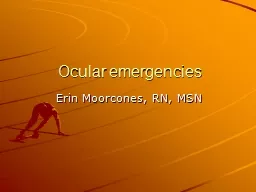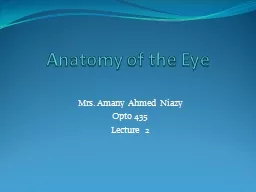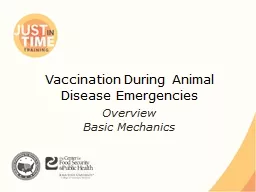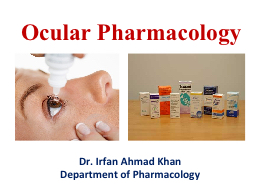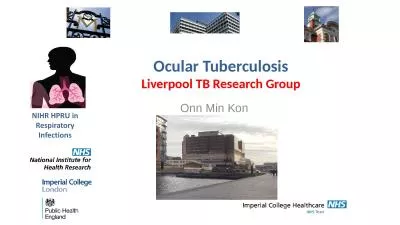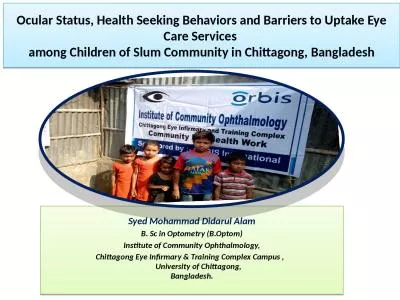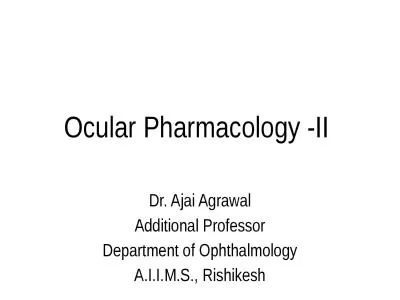PPT-Ocular emergencies
Author : stefany-barnette | Published Date : 2016-03-18
Erin Moorcones RN MSN The Eye Anatomy and physiology The eyes are protected by bony structures eyelids and sclera Lacrimal glands secrete tears which continuously
Presentation Embed Code
Download Presentation
Download Presentation The PPT/PDF document "Ocular emergencies" is the property of its rightful owner. Permission is granted to download and print the materials on this website for personal, non-commercial use only, and to display it on your personal computer provided you do not modify the materials and that you retain all copyright notices contained in the materials. By downloading content from our website, you accept the terms of this agreement.
Ocular emergencies: Transcript
Download Rules Of Document
"Ocular emergencies"The content belongs to its owner. You may download and print it for personal use, without modification, and keep all copyright notices. By downloading, you agree to these terms.
Related Documents

